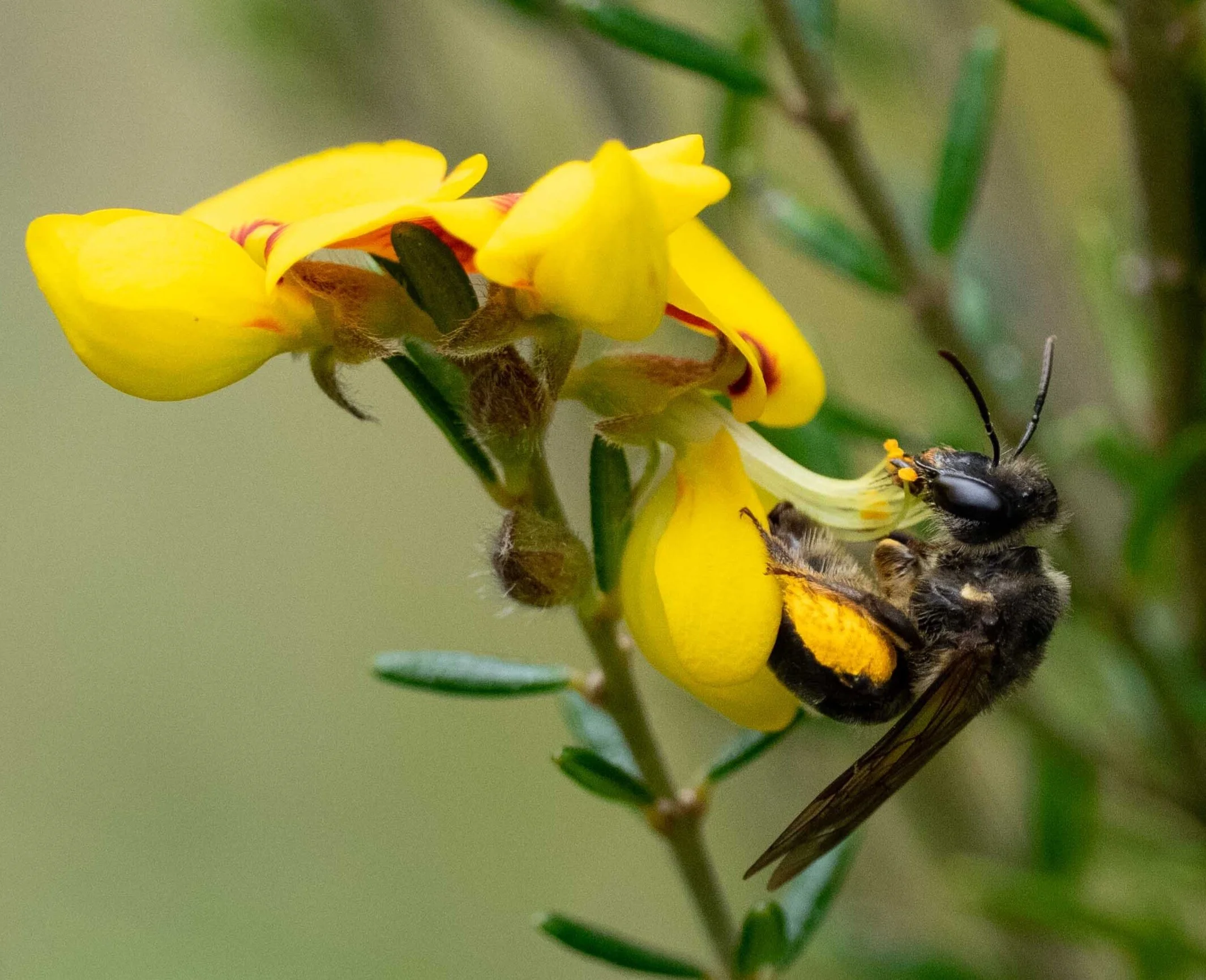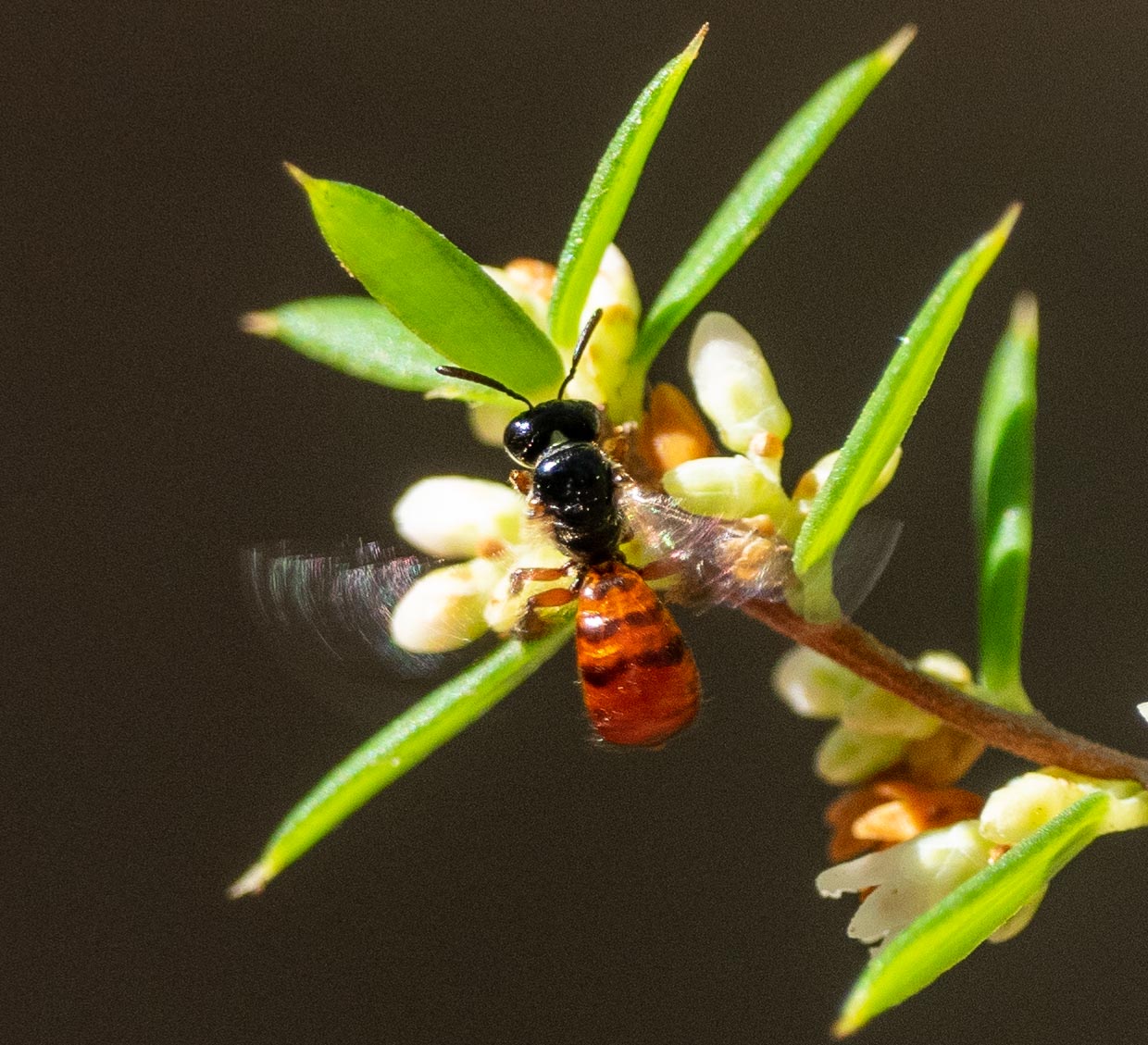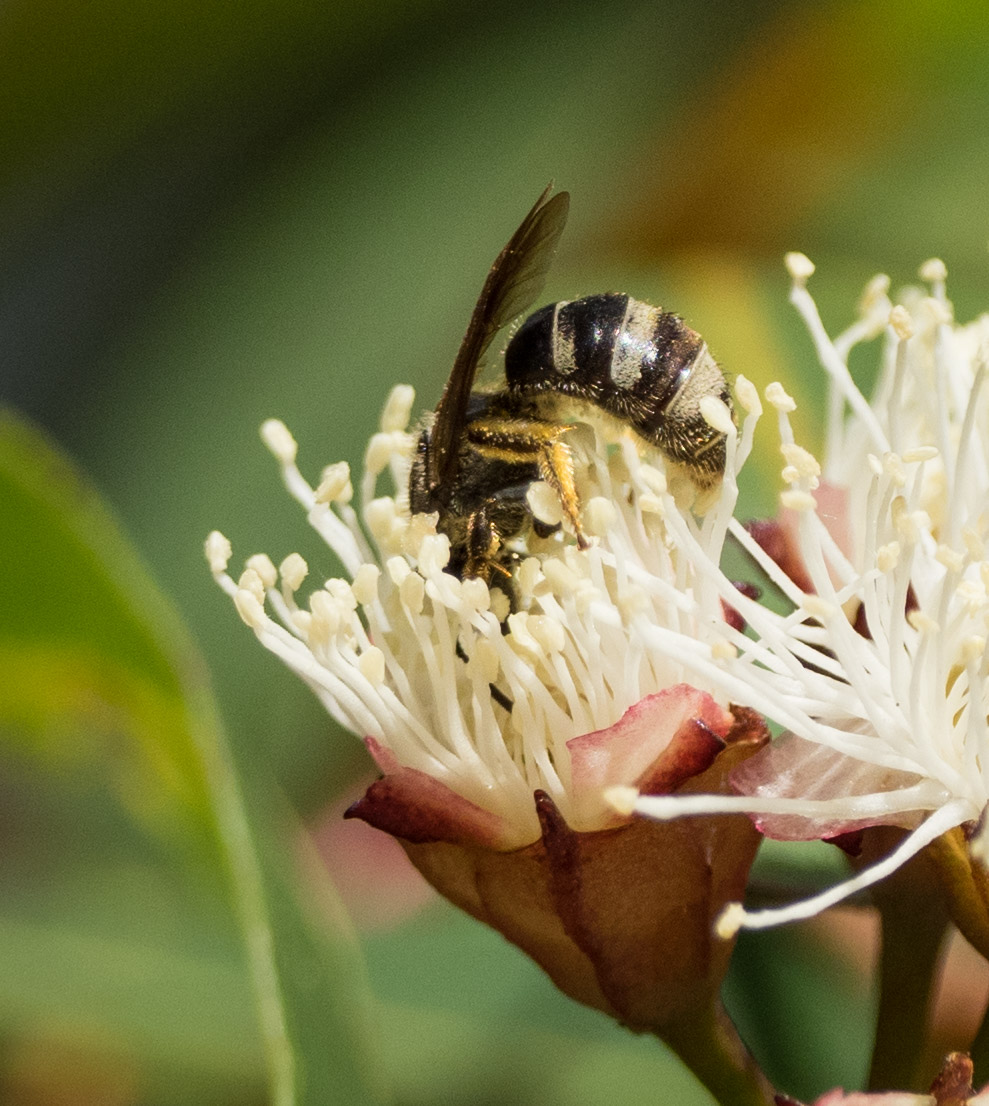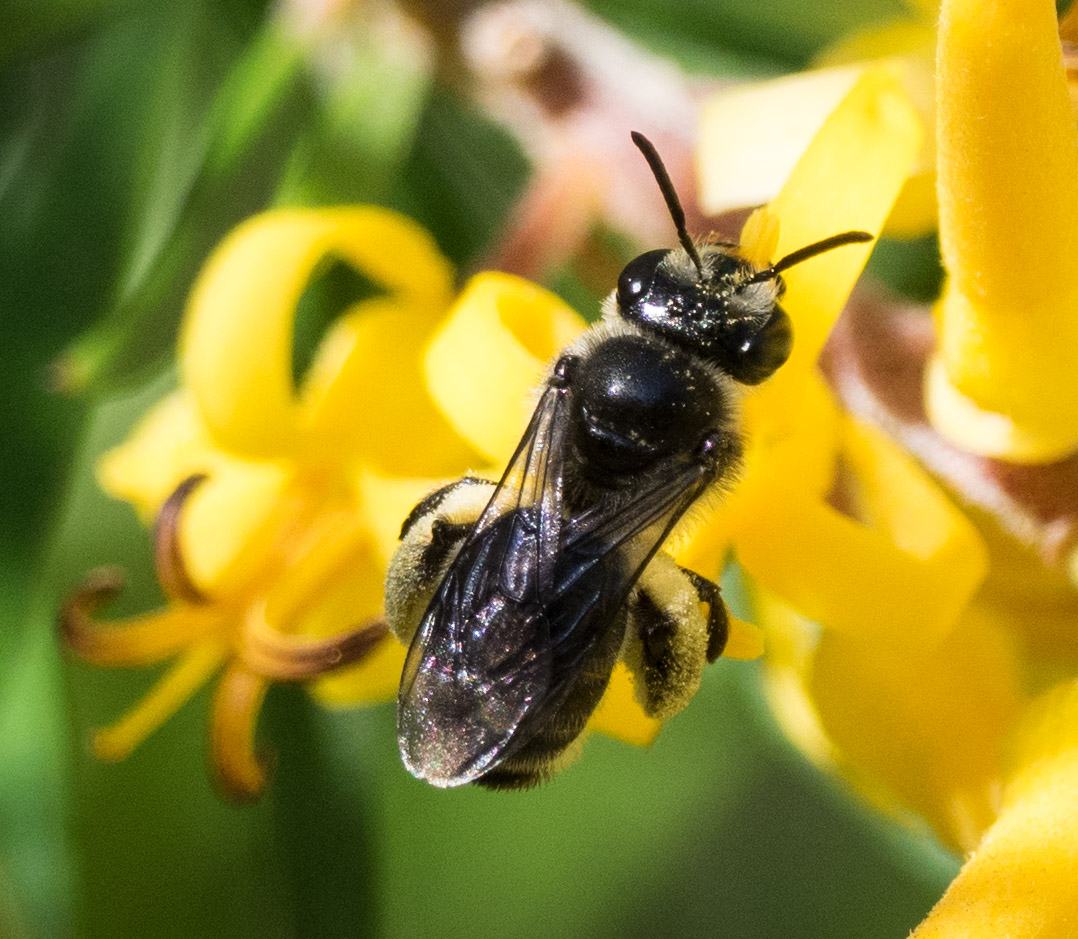The business of bees

Bees are among the most important pollinators in our forests and woodlands. Of course, like all pollinators, they’re not deliberately assisting the plants. Quite the contrary. Most of the pollen they steal becomes unavailable for breeding plants - and instead goes towards making more bees!
After watching several different bee species lately, I decided to look a little more closely at what they were actually doing at the flowers they visit.
This is every bit as fascinating as bird watching. Bees are just as varied in shape, size and colour. Males and females behave quite differently. They use a wide range of feeding strategies. Like birds, some bees visit gardens and feed on exotic plants. And each bee species has its own particular ‘jizz’ - a concept familiar to bird-watchers the world over.
If bee-watching was as popular as bird-watching, much more would be known about these fascinating insects. However, apart from a small handful of species, the biology of Australian bees is not well understood, and even less is known about each species’ particular roles in pollination of native plants.
I have plans to stake out one or two bushes and document the various insect comings and goings. Tracking some bees as they forage and then return to their nests is also high on my to-do list. But for now, here are just a few recent photos and brief observations.
Buzz feeding bees
A few rather straggly looking Dianella plants were attracting a lot of attention last week. With their stunning golden anthers hanging well clear of the petals, these flowers make bee watching easy.
These are females, as only females carry pollen back to their nests.
Male bees do visit flowers to feed. They drink nectar for water and sugar, and eat pollen for protein and fats. But they never gather pollen for transport.
Small female bees (~5mm long) working the anthers of Dianella flowers
At each flower, she would work one or two anthers and then reach across to grasp the next ones, using her mandibles and legs.
She would bite the orange base of the anther, but just for grip. She clearly wasn’t eating it. In fact, a close look at the anthers shows that they’ve been host to many such visitors.
It took me a moment to realise that the bees were ‘buzzing’ the flowers! This is the first time I’ve recognised this behaviour for what it is. I’d heard of plants being ‘buzz-pollinated’, but not thought a lot about what that actually involves.
The anthers of Dianella open through pores at the end. By vibrating their flight muscles, the bees shake the anthers … and then catch the falling pollen grains on the underside of their bodies. They then comb and pack the pollen onto their specialised, hairy legs for transport.
The introduced European Honey Bee (Apis mellifera) doesn’t buzz feed (or ‘sonicate’). Therefore pollen in anthers like Dianella is not available to them. Good news for native bees!
Territorial bees
The other bee antics I’ve been watching this week could not have been more different to the Dianella show.
This male Blue-banded Bee (Amegilla sp.) has been hanging about a flowering curry leaf bush in our garden all week. He occasionally takes nectar, but otherwise spends most of his time either resting or harassing other visiting insects. This is clearly his patch!
This Jewel Beetle was allowed only a few seconds on the bush before the bee chased it off.
Like most male bees in this family, the Amegilla grips the perch with his mouthparts. And it seems that the wire of the garden enclosure also makes an excellent roost!
Another colourful bee made a brief appearance as I looked on. Chased off the flowers by the territory holder, this smaller bee settled briefly on the wire nearby. I excitedly grabbed a couple of shots, as this is a ‘first’ for us. We’ve not recorded this species - nor this family! - here before. It looks like a male Megachile, perhaps Megachile ferox.
Many Megachile bees build nests in hollow wood. They line the nest with pieces of leaf and close the entrance with a resin cap. Hence their common names of Leafcutter Bees and Resin Bees.
References
Duncan, D. 2003. Pollination of Black-Anther Flax Lily (Dianella revoluta) in Fragmented New South Wales Mallee. A report to the Australian Flora Foundation. (available online)
Houston, T. 2018. A Guide to Native Bees of Australia. CSIRO Publishing, Clayton South, Vic.
























